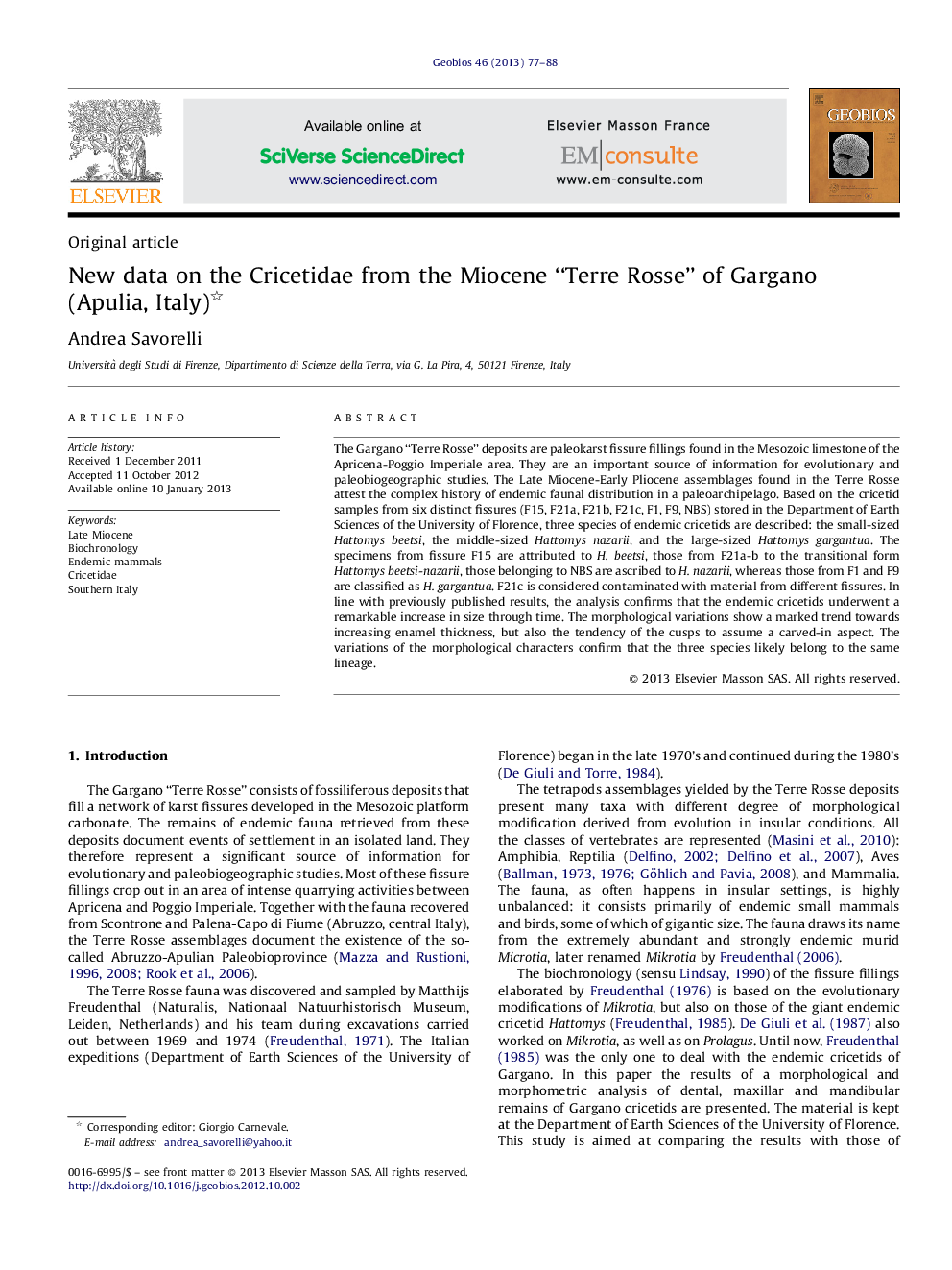| Article ID | Journal | Published Year | Pages | File Type |
|---|---|---|---|---|
| 4748242 | Geobios | 2013 | 12 Pages |
Abstract
The Gargano “Terre Rosse” deposits are paleokarst fissure fillings found in the Mesozoic limestone of the Apricena-Poggio Imperiale area. They are an important source of information for evolutionary and paleobiogeographic studies. The Late Miocene-Early Pliocene assemblages found in the Terre Rosse attest the complex history of endemic faunal distribution in a paleoarchipelago. Based on the cricetid samples from six distinct fissures (F15, F21a, F21b, F21c, F1, F9, NBS) stored in the Department of Earth Sciences of the University of Florence, three species of endemic cricetids are described: the small-sized Hattomys beetsi, the middle-sized Hattomys nazarii, and the large-sized Hattomys gargantua. The specimens from fissure F15 are attributed to H. beetsi, those from F21a-b to the transitional form Hattomys beetsi-nazarii, those belonging to NBS are ascribed to H. nazarii, whereas those from F1 and F9 are classified as H. gargantua. F21c is considered contaminated with material from different fissures. In line with previously published results, the analysis confirms that the endemic cricetids underwent a remarkable increase in size through time. The morphological variations show a marked trend towards increasing enamel thickness, but also the tendency of the cusps to assume a carved-in aspect. The variations of the morphological characters confirm that the three species likely belong to the same lineage.
Related Topics
Physical Sciences and Engineering
Earth and Planetary Sciences
Palaeontology
Authors
Andrea Savorelli,
